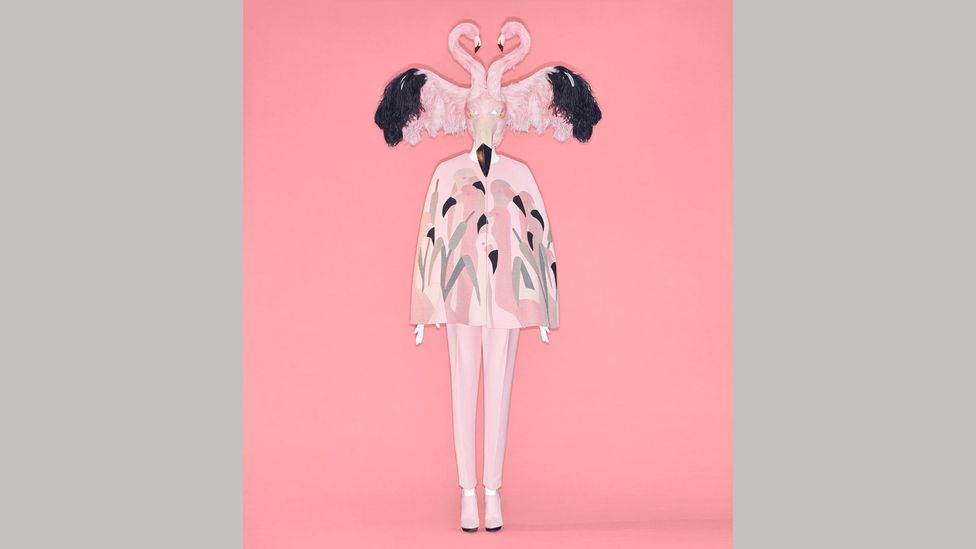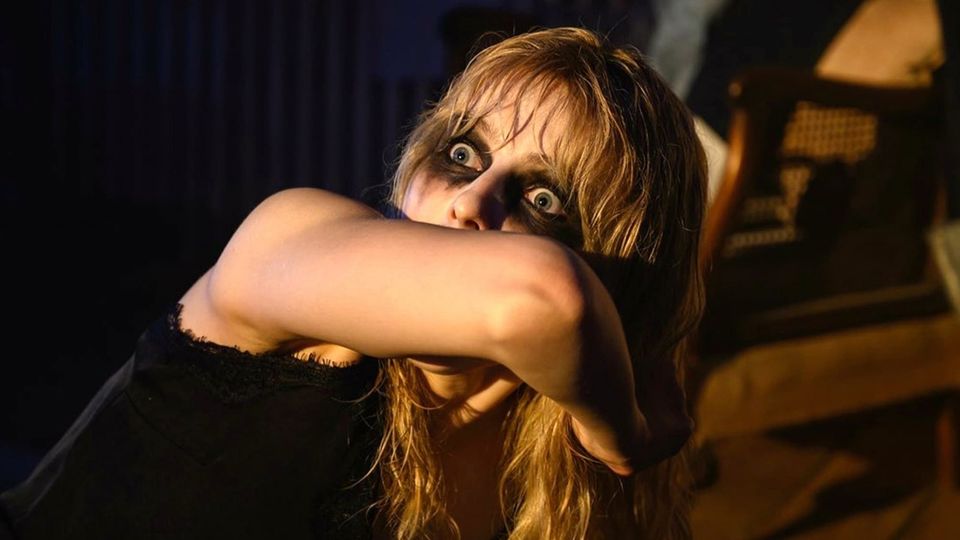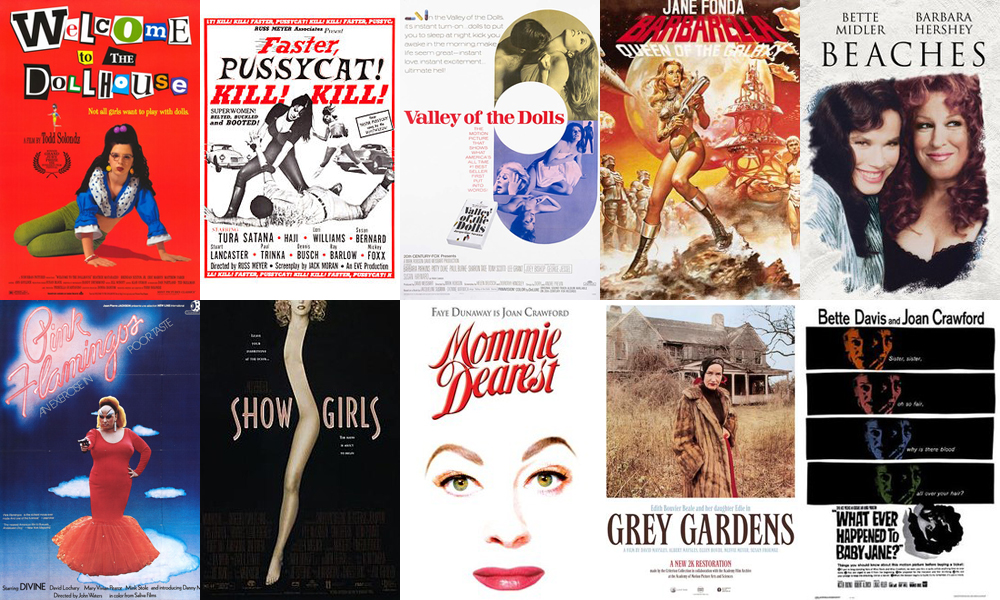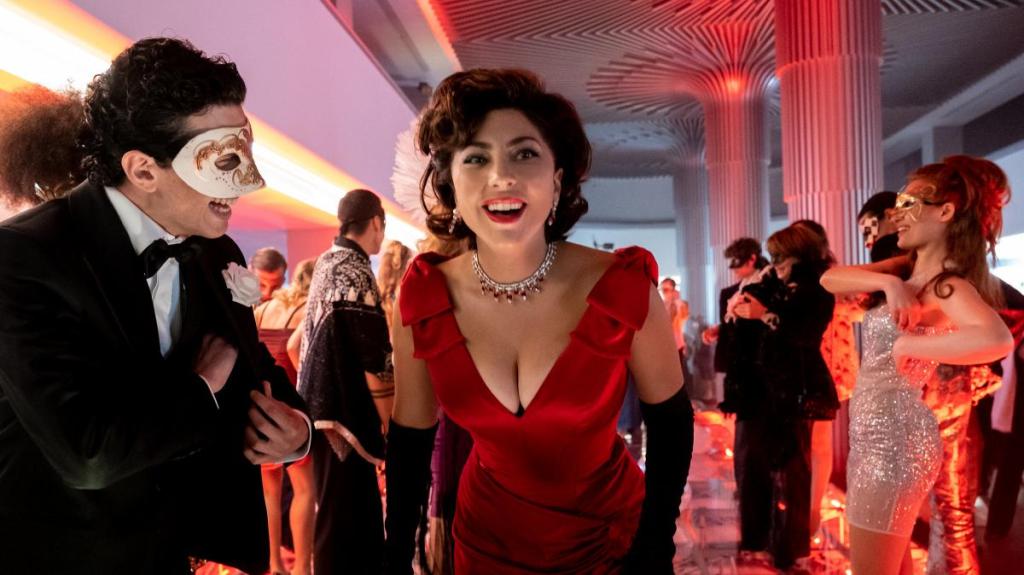So, I recently sat down to watch House of Gucci after hearing about all the mixed reactions the movie had received for the past couple of months since it came out, and still, when I was watching it I was left a little perplexed. Because it’s not a movie you can easily categorize or put in a box, and that took me back a little because I have gotten so used to most studio movies being just one specific thing. And especially in a genre like a biopic, which is plagued by very standard formulaic filmmaking, House of Gucci almost seems to be like a parody of the “based on a true story crime family drama” at times. It is over the top and ridiculous, and the best part is everyone is giving it their everything, especially Lady Gaga, who is actually really good in it. So after watching it, the reaction does make sense to me. When you throw everything at the wall, you often end up dividing the audience, which is probably the reason most movies don’t take the risk of being so out there. And in the case of House of Gucci, even the movie itself seems to be scared of its camp identity and tries to lose it halfway through and focus on being a more high-brow drama, but that’s also when the movie becomes far less interesting. Now I know that’s not true for everybody since a lot of people weren’t sold on the camp, especially if you were someone who knows this world personally (Tom Ford Clip). The biggest point of contention among people though is most probably Jared Leto’s performance, because I have seen every range of reactions possible – from people calling it one the best performances ever and him getting nominated for every award show, to people just calling it dogshit and thinking he spoils the movie anytime he’s on-screen. For me personally, it was glorious to witness and I loved his performance in the movie, well precisely because it is bad and campy – from his over-the-top makeup to the ‘it’s me Mario’ voice. Now whether he is doing this campy performance, I’m not really sure. Jared Leto doesn’t really strike me as someone who has much self-awareness, we are talking about the guy here who sent his costar used condoms to prepare for his role, his antics are kinda stupid. But does it matter if it’s intentional? Because even if it is unintentional, and Jared Leto thinks he is doing the most authentic portrayal of the character, that doesn’t take out the charm from it and it’s still hilarious, if not even more so because of his unawareness. Or maybe he is actually the genius who deserves all these accolades, who got the campy tone of the movie and played it bad on purpose and all the doubters are just not at the same level.
But why would anyone do that? Which is a fair question to ask. Just a few months back, I had gone to watch James Wan’s malignant with a friend in the theatres. Half away through the movie, she turned to me and asked, “Why is the acting in this movie so bad?” So I explained it to her, that James Wan was doing a homage to the Italian Giallo horror movies, and he was making everything purposely bad in the vein of those 80s horror movies. Needless to say, she wasn’t impressed by the answer, because she just said, “That’s stupid. Being bad on purpose is still bad.”, which is hard to argue against. But I had so much fun with Malignant, especially with how stupid and outrageous it gets towards the end, but my friend, well not so much. I wanted to explain to her why I enjoyed it so much, or how it was just pure camp. But I realized that it was too complicated to talk about, especially since I was myself unsure about how to define camp. But that is precisely what I’m gonna do in this video, try to define, what the art of camp is – and when is “bad” good?

When we think about what gives a movie its identity, we think of a lot of elements that come together to make the movie what it is – the script, the characters, the visual aesthetics, the cinematography, the direction, the sound, music, actors, style, and the genre, but there’s one part of films as a medium that we rarely talk about, and in my opinion, it is one of the most vital parts of a film’s identity – The Mode of Sensibility it operates in. But it makes sense that it is not much talked about since it is so hard to define what we mean when we use the term ‘sensibility’, much rather try to discuss its effect and uses. Yet, sensibility is something we are all aware of when we watch a movie, we can differentiate between the different modes of it, although such a distinction is largely dependent on personal taste. And thus we have a point of contention, on whether sensibility comes from the artist creating the art or the audience consuming it, and the truth is, the answer isn’t very simple, since art cannot be judged without being observed – it’s like trying to study the movement of electrons without disturbing them with photon particles…. Quantum mechanics anybody? Hehe, I guess not, my bad…
Sensibility can thus be thought of as a combination of style, perception, and taste. And while all these are highly subjective qualities, it doesn’t mean they can’t be studied and classified objectively. Look at these clips for example –
Clip 1 – I’m Batman (Adam West from Batman 1966)
Clip 2 – I’m Vengeance (Robert Pattinson from The Batman 2022)
In both these scenes, Batman has to deliver a very similar line, yet they depict distinguishable sensibilities. The clip from the new Batman film is sincere and grounded in realism, accompanied by a dark and grimy aesthetic that makes you take the situation very seriously despite the fact that it’s a guy in a batsuit beating up street thugs. While in the second, everything is done in an over-the-top, almost tongue-in-cheek manner, and we as an audience aren’t intimidated by this Batman, but rather laughing at the absurdity of what’s happening on screen. This peculiar sensibility of finding ironic value in entertainment is the one that goes by the name ‘Camp’. But camp isn’t just about laughing at how absurdly bad a piece of art is, it is much more complex than that. Elements of camp can be found in cinema throughout its existence, and not just in low-brow b-movies or cult favourites, camp is often used by master filmmakers to accentuate a scene, and in that way, it can be another indispensable tool in a filmmaker’s toolbox.

So, what is Camp?
Well again, there’s no simple way to put it. The English term can be first traced back to Britain in the 1800s where it was used to describe the activities of gay men, who were considered to be ‘extra’ and flamboyant in the way they presented themselves. The term later evolved among urban cliques and ironically, cults, and its usage got closer to how we understand it today. But it was Susan Sontag’s seminal essay on the subject, ‘Notes on Camp’ – an essay I’ll be referencing too many times to count in this video, that gave us a proper understanding of what camp is. Camp, as Sontag put it, is a certain mode of aestheticism. It is a way of viewing the world as an aesthetic phenomenon, one that is not of beauty, but of exaggeration, in terms of artifice and stylization. If the natural mode of sensibility, if there is anything as such, is to immerse an audience into a film by grounding it in realism such that the presentation is indistinguishable from real life and the audience can connect with and feel for the characters without being reminded that they are watching a work of fiction, then camp is just the opposite of that. Camp exists as a knowing wink, the essence of camp is its love of the unnatural: of artifice and exaggeration. Sontag calls Camp the style of things-being-what-they-are not – a man is supposed to be “masculine”, thus the feminine aesthetics of some gay men or the drag queens are considered to be camp since it goes against the natural. Camp is when we find ourselves laughing at a violent death scene instead of being horrified by it, as is naturally assumed. Camp turns the serious into frivolous, and often the other way around as well – violence becomes a funny affair, and the most trivial of things are treated with grave seriousness, which in turn makes the situation funny. Camp sees everything in quotation marks, it’s not a vampire, it’s a “vampire” it’s not a woman, it’s a “woman”, it’s not being a character but rather playing a role, it is the farthest extension, in sensibility, of the metaphor of life as theater. Camp doesn’t follow the traditional rules of art, it exists in ludicrous abandonment. Thus, with camp, everything is in ironic taste, so it always operates at two levels at the same time.
In her essay, Sontag says certain artforms have more affinity towards camp and lists random objects which according to her are camp, she talks about movies and includes a few movies from her time like the original King Kong and The Maltese Falcon, neither of which are considered obvious examples of campy movies as we view them today. She also notes how lists like ‘10 worst movies ever made’’ were the populizers of camp since most moviegoers go to watch movies in a very unpretentious way, which is precisely how many people get indoctrinated to the cult of camp even to this day.

The most popular camp phrase is probably – so bad it’s good, and a whole subculture of cinephiles who watch movies with the intent of laughing at them. But not every bad movie can be enjoyed, it requires a special quality and outlandish ambition to make it more than just a failed attempt. Countless bad movies come out every year and are forgotten a week after their opening weekend, so these ‘so bad it’s good movies’ are surely doing something right for people to remember and watch them years after their original release. They’re almost the same as the endearing classics of cinema that are watched by moviegoers despite new offerings every week, but in a very different way – I would call them the ironic classics. Just look at the popularity of internet shows dedicated to watching and making fun of bad movies, and you’ll see the audience for it. And since we’re on the topic, there is probably no better movie than the 2003 cult classic, written, produced, directed, and starring Tommy Wiseau – The Room. Tommy was an aspiring actor who got rejected multiple times when he came to Hollywood, well because that’s what Hollywood is, very rarely do people just drive here and get overnight success. But luckily for us, Tommy had some mysterious source of impossible amounts of money and he said, ‘Fuck it, if nobody will cast me, then I will cast me!’. Thus Tommy Wiseau completed writing a script on his own and had set out to make the greatest American drama in lieu of something by Tennessee Willaims, and he made every single wrong decision possible along the way. The Room is a cinematic paradox in a way, it is a colossal mistake at every level, but you can’t help but watch, and moreover, be entertained by it. It obviously flopped when it came out in theatres, but over the years it has gained an immense fan following and is regularly shown in special midnight screenings and has even inspired a real big award-winning Hollywood movie based on its creation. Yes, it is quite a phenomenon – the celebrities love it, the internet loves it, people throw spoons at the screen while watching it (yeah that’s a thing). But why this movie? As Sontag notes, the best camp is one that is innocent. Wiseau didn’t set out to make a campy flick, and neither was he trying to just put together a movie to earn some quick buck, despite its flaws, The Room is a labour of love, a passion project for its creator. Tommy Wiseau was truly ambitious in his effort, to a degree of fault, but everyone in the movie commits to his vision and plays it like they are in a serious drama – which is why it works. It completely lacks any sort of self-awareness, and thus you get comedic golds like this – (Just use any clip from The Room, all of them suck equally)
But The Room isn’t the only camp classic built off of mishaps, like I said it’s an entire subculture, and I think I’ll discuss it separately in a video someday since I’m one of the weirdos who enjoys watching bad movies just to laugh at them. I don’t even consider them guilty pleasures, they are just fun.

Obviously, not everyone shares the same attitude towards cinema, most people who are just looking for an engaging story that can keep them entertained for two hours will be put off by a movie as bizarre as The Rocky Horror Picture Show. But the movie has a dedicated cult following of people who religiously watch it and put up screenings where they even dress up as the characters and re-enact the film for a live audience. Camp as sensibility only attracts people with a particular taste. It used to be most popular among urban cliques and obviously the LGBT community, because of its affinity for the unnatural and outrageous, which these communities could identify with. Campy movies are like comfort food for a lot of people, camp is a taste of love, love for human nature, love for the unnatural and theatrical, as it doesn’t judge, but rather relishes the little triumphs and awkward intensities of life and art, and in that way, it’s also a form of pure enjoyment.
But camp isn’t mindless either. Sontag calls camp a variant of sophistication but hardly identical to it. A certain level of sophistication is required to understand camp or have a camp taste since you need to be in on the joke. Now if an audience member themselves lacks any awareness, then nothing from a so-bad-its-good-movie will be fun for them, they would think they are just watching a really boring drama. This is why over-the-top cringe elements (like the Hallmark films or Netflix original movies) are still seen in low-level movies that are just going to be consumed as products by a mindless audience who won’t ever put much thought into it. They can be watched through a camp lens and enjoyed, although the unambitious generic cash-grab nature of such films prohibits them from being true camp. To be true camp, you need to be really out there, it’s not about being bad, it’s about attempting to be extraordinary and failing, to create something so audacious and passionate that it makes you take a note.

Here is it important to draw the difference between deliberate and naive camp. According to Susan Sontag, pure camp is always naive. She says that camp which is aware of its own campiness is seldom pleasurable, pure camp requires a sense of self-seriousness that fails. And there’s some truth to her statement. Since the Room, Tommy Wiseau and Greg Sestero have tried to recreate its success, but in trying to be bad on purpose, all their output since has been far less enjoyable as it has lost all its original charm. Similarly, other movies that set out to make a bad movie on purpose are never as good as movies that had no idea they were being camp. But Susan Sontag wrote her essay in 1964, and camp in films has gone through a huge change since. Because of the change in sensibilities over time, some of the most beloved Hollywood classics may seem campy to audiences today because of their exaggerated presentation. But when they came out, they were the standard for how movies should be. Earliest examples of intended camp come from the B-movies that were being made in the 40s and 50s, and which experienced a boom in the 60s. Notably, Ed Wood’s filmography is an iconic part of the so bad it’s good cinema landscape. And then later, elements from those movies found their way into the mainstream because of a new generation of filmmakers who grew up watching the B-movies movies and identified the outrageous potential of entertainment value in them. Campy movies were extremely popular in the 80s and 90s, with complete genres that were saturated with camp. The B-movie sensibilities were now part of the broader cinematic language with mainstream films leaning into that direction.

Now, there is some truth to the statement that good art cannot be camp, since the most obvious examples of camp are ridiculously bad movies, but that doesn’t mean camp sensibilities cannot be found in High Art. Initially, camp was seen as a reaction to the purposely serious nature of High culture. But there are other creative sensibilities besides the ‘serious’ (both tragic and comic) esoteric styles of high culture and one cheats oneself, as a human being, if one only respects the sensibilities of high culture. The supposed greatness of cinema isn’t just based on realism and accurate portrayal of the human experience, it also requires stretching the medium and exploring absurd questions on the human experience. Thus we see the influx of the bizarre in the world of cinema, most often in genres like horror or science fiction, movies far removed from reality, but ones that would still be considered High art for their thought-provoking nature. Clearly different standards apply here than in traditional High culture. Any Art is good not because it is accurate, but rather because through it another kind of truth about the human experience is being revealed. In short, another valid sensibility is being revealed, one that exists in the peripheries of extreme. Camp is the sensibility of the theatricalization of such experiences, and thus, Camp is clearly a very post-modern sensibility, since it is a reflection on the art itself.
Many great movies incorporate camp to enhance their narratives with hints of superficiality and theatrical presentation. Camp isn’t limited to just bad action and horror movies from the 80s, even the works of the greats like David Lynch have undeniable camp elements that make them more enjoyable. Lynch’s movies relish on the comedy of the absurd, and that goes for all other outlandish stories from that era. Quentin Tarantino incorporates camp in his movies as a reference to the B-movies he grew up watching, it is a way of having fun, and at the same time adding a different layer (insert scene from Kill Bill). When borrowing a style he goes completely into the over-the-top aesthetics of the genre, like the stereotypical kung fu master with a goatee or a Japanese girl in high school uniform beating a gang up. These filmmakers blend camp with seriousness to achieve a result that is more entertaining and layered in the process. Look at the beloved 80s classic The Princess Bride, for example, it is a fairy tale far removed from reality, and it is told through the narrative device of narrating a bedtime story to a kid, so it requires a sense of the whimsical. And that is achieved through the campiness, as we can see in the film that makes it a perfect blend of camp and adventure, so even when the situations are dire, it’s never not fun. And speaking of whimsy, probably nobody does it better today than Wes Anderson. Wes Anderson’s films are a constant blend of seriousness and camp, which gives them their signature charming quality. Campy performances have saved many films, which would be totally forgettable blobs otherwise. Think Tim Curry from the original IT miniseries, or Johnny Depp as Jack Sparrow and Tom Hardy as Venom elevating their by-the-numbers traditional blockbusters into more than what’s on the page. So, camp adds more flavour and flamboyance to could otherwise be a dull lacklustre affair. I mean we can all agree that Nicolas Cage makes any movie 10 times better just by his presence, right? (Just insert any Nic cage clip). So, it would be really naive to say that camp is just bad art, it is just another way of approaching art. Calling a movie campy is not degrading its quality, but just identifying its sensibility, as some of the greatest movies ever made are filled with camp. Heck, even the works of Oscar Wilde and The Great freaking Gatsby have campy elements associated with the depiction of High society. So take that you literary snobs, don’t you dare look down upon us for liking Nic Cage. The man is a genius.

If there’s anything postmodern art does, it “obliterates the line—or the brow—separating the high from the low,”
So why, why such a divisive reaction to these modern movies trying to incorporate camp? Well, for that we need to talk about the death of camp for a bit. After the 90s, with the rapid improvement in technology and CGI graphics and because of the need for cinema to be more immersive than ever, in order to compete with the rising quality of television and internet media, the goal quickly became to immerse an audience as realistically as possible, even when the concepts in the movies were completely fantastical. The big genre movies even started taking themselves seriously. In 2008, we got both The Dark Knight and Iron Man, big commercial hits that took their source materials seriously and brought them to reality, whereas comic book media had mostly been campy until then because comics books were largely considered to be a lower art form. There simply isn’t any need to be camp anymore, we are at a point in terms of both technology and sensibility, that big purple alien spewing philosophy and killing half of the population can be done with complete sincerity, or a man being attacked by a bear can look real and visceral on camera, without it ever becoming goofy. Also, camp requires an amount of courage. You need to have the courage to suck, or else you just can’t attempt something that is completely out there. And that’s the thing Hollywood doesn’t like doing anymore – taking risks. Everything is standardized and made with little care to try something new, it’s all a repetition of what works and is tested a million times in focus groups and test screenings, so what we get are only homogenous movies that are too afraid to have a personality and do something completely wild. The movies, along with the audience, have become a bit too self-aware, to the point where if writers do put something out there in a script, they immediately feel the need to cut it down with some form of sarcasm or irony. And when you become ironic in your work itself, the question of your work having ironic value goes out of the window. Every movie nowadays feels the need to make fun of any element that might be considered zany or campy, or have a character witness some weird shit and then immediately just end it with a lazy joke by them going… “yeah, that just happened.” (No way home clip) I don’t have anything against this more realistic and self-aware style of storytelling, but I’m just disappointed in the inability of artists to go weird in the mainstream anymore. Like I’m sure Mahershala Ali will be a great Blade in the upcoming Marvel movie, but I doubt he’ll say anything in it as profound as (ice-skate uphill clip).
But is it just the audience who have rejected any sensibility that questions their sense of reality, because they just want brain-dead comfort food in terms of entertainment? Do we now judge art through such a narrow lens that anything that makes us think or leave our comfort zone, is immediately rejected? While an argument can be made for that, it would be lazy to just blame it all on the audience.

Well, here I think I need to point out that time has a great effect on what is and what isn’t considered camp. Sensibilities change over time with our societal cultures evolving and with it our response to art. Movies from classic Hollywood will appear full of camp to us, even though that wasn’t their intention, they were only operating within their natural mode of sensibility of the time. Things go out of fashion quickly and thus, the over-the-top elements of an era appear campy to us. An 80’s mullet would be considered campy in the modern context, but back then it was the craze. So maybe, the movies from the 80s and 90s appear campy to us because of the cultural shift we have had in the meantime. And while 20-30 years may seem too short for culture to evolve in any significant way, we have to remember that these last couple of decades have also seen the most rampant change in media production and consumption in history. Like I said earlier, cameras and technologies are better than ever, to the point where life on screen is indistinguishable from reality. We are also constantly surrounded by screens all the time around us and consume more media than ever before, so suspension of disbelief has worn out to some extent – Visual media just feels natural to us. So audiences today accept a lot less in terms of style that breaks their sense of realism. Now, I’m generally talking about only western media here, since Indian cinema, be it in Bollywood or the South Indian film industry, or even Asian cinema to some extent, is filled with camp, most of them even bordering on kitsch, so it’s an entirely different problem. But even in mainstream Indian cinema, we are seeing the change in sensibility because of the arrival of online media and exposure to different tastes.
And this is why I feel different sensibilities have a space in our world – camp isn’t really dead, as long as there are people around who appreciate it. The advent of the internet also has made sure that there is a niche for everything. And we are a generation who knows to appreciate things for ironic value. Much of our meme culture is based on ironic comedy that can be considered camp. This is why old campy movies from the past are suddenly having a resurgence. There’s a certain joy to seeing people try and fail hilariously, and thus the so bad it’s good movies often offer the same kind of satisfaction as the video of watching a guy perform a failed stunt – they are excellent sources of meme material. Complete disasters like Showgirls and Rocky Horror Picture show have been revamped and given a glow-up as camp classics. Like I mentioned earlier, there are entire internet shows dedicated just talking about hilariously bad movies, and the so-bad-its-good movies are now part of the cinema canon. They are not some weird obscure pieces of art, but rather readily available and sold as products. Lost gems like Samurai Cop have been discovered years after its release and it even got a sequel in 2015. Yes, even Samurai Cop got a sequel. Why? Because suddenly there is a demand for such outrageous stories. And filmmakers have tried to cash in on this phenomenon, and this is where you get movies, like Sharknado, wolf cop, or this meme, which is an actual movie, called Velocipastor (yeah, it is a real thing). But as Sontag had pointed out in her essay, these movies are rarely as satisfying as unintentional or pure camp, because often they get lose their charm due to self-awareness. We even have an emerging culture of hate watching now, with people just watching movies to see how bad they are and roast them, so we are going even beyond camp.

But guess what? You don’t need to be bad to be camp. A good filmmaker knows when and how to exaggerate the sensibilities and be embrace the camp to serve the story. They aren’t trying to be bad, they just are having fun with the idea, and that fun translates onto the screen.
And this is why I think camp is important, and something that shouldn’t be put to bed yet. In a line from Notes on Camp, Susan Sontag makes a very interesting remark – “What is most beautiful in feminine women is something masculine, and what is most beautiful in virile men is something feminine.” That line stuck with me because it is something I truly believe in. Our differences from the norm make us more attractive, it adds extra layers to our character and makes us more interesting as people. And it goes the same for cinema, cinema shouldn’t be put in a box, it should be allowed to express in all modes of sensibilities it possesses. I’m not saying that campy movies are superior to all other kind of movies, I’m just saying it shouldn’t be something we shy away from it, the more variety in artistic expression, the more interesting art we’ll get. Cinema should be allowed to be whatever it wants to be. A murder mystery with political undertones can be campy fun, while a movie about a spiky alien being beat up by six action figures can be completely serious, it all works. Camp shouldn’t be a thing for only those quirky little indie movies, especially when we know it works. James Gunn infused both DC and Marvel with his B-movie campy sensibilities in Guardians of the galaxy and The Suicide squad, and both franchises are better off for that. Same goes for the Grandmaster in Thor Ragnarok and the Drummer Octopus in Aquaman, they just make the movies more fun and interesting. Which is why recent movies like House and Gucci, Malignant, or Last Night in Soho, should be appreciated for trying to break the mold and bring camp back to the mainstream, because god knows we need something different and crazy now. And the next time you are watching something and you think to yourself, “This is silly” “This is stupid” “This is bad”, just ask yourself one question – “Am I enjoying this?” and if the answer is yes, just keeping enjoying it. That’s all that matters.


